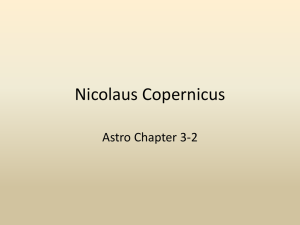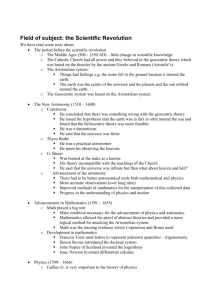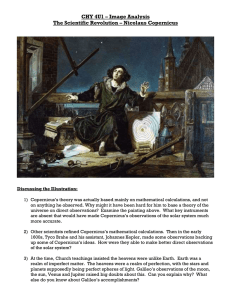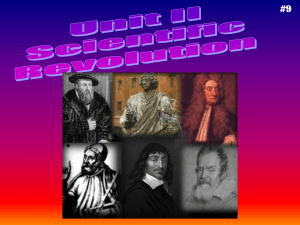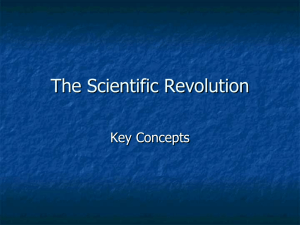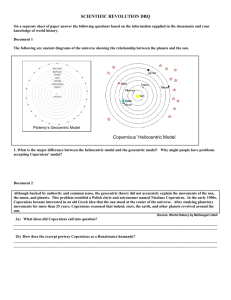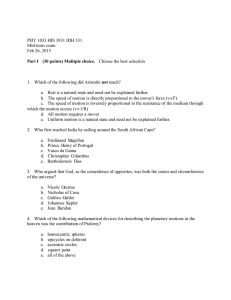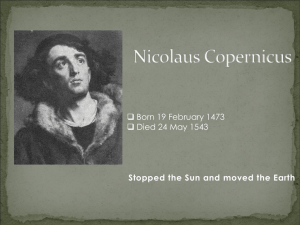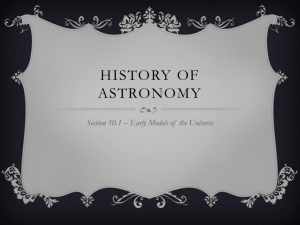Lecture 7 - NATS 1710
advertisement
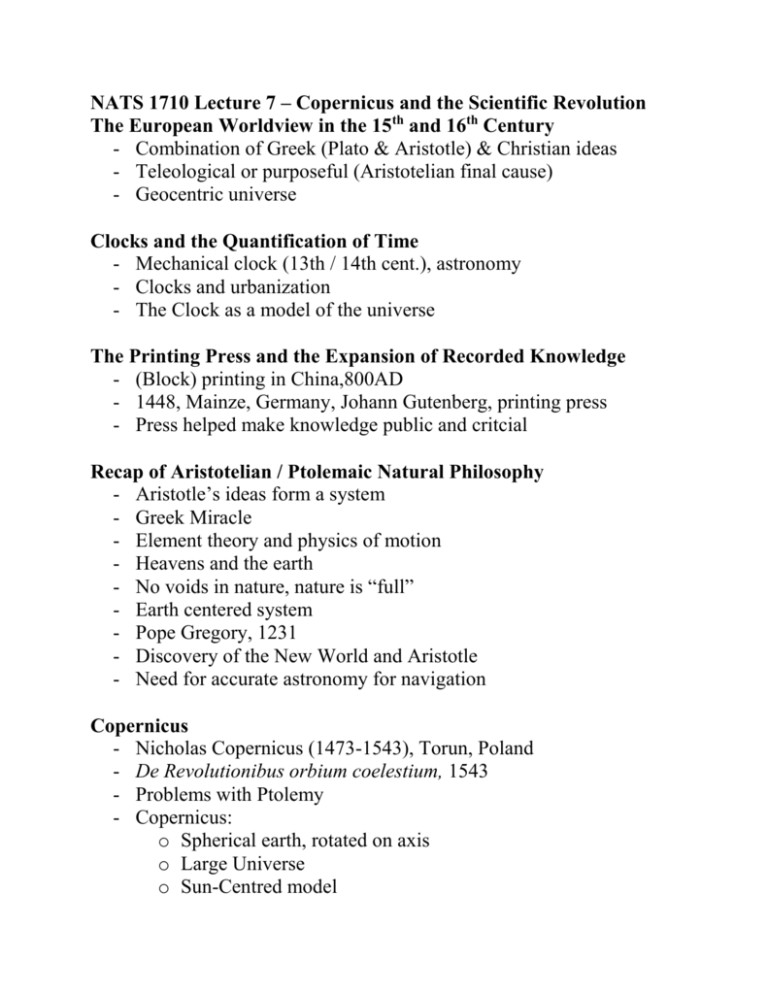
NATS 1710 Lecture 7 – Copernicus and the Scientific Revolution The European Worldview in the 15th and 16th Century - Combination of Greek (Plato & Aristotle) & Christian ideas - Teleological or purposeful (Aristotelian final cause) - Geocentric universe Clocks and the Quantification of Time - Mechanical clock (13th / 14th cent.), astronomy - Clocks and urbanization - The Clock as a model of the universe The Printing Press and the Expansion of Recorded Knowledge - (Block) printing in China,800AD - 1448, Mainze, Germany, Johann Gutenberg, printing press - Press helped make knowledge public and critcial Recap of Aristotelian / Ptolemaic Natural Philosophy - Aristotle’s ideas form a system - Greek Miracle - Element theory and physics of motion - Heavens and the earth - No voids in nature, nature is “full” - Earth centered system - Pope Gregory, 1231 - Discovery of the New World and Aristotle - Need for accurate astronomy for navigation Copernicus - Nicholas Copernicus (1473-1543), Torun, Poland - De Revolutionibus orbium coelestium, 1543 - Problems with Ptolemy - Copernicus: o Spherical earth, rotated on axis o Large Universe o Sun-Centred model - o Mars and Venus o Retrograde motion Circles, deferents, epicycles and eccentrics Heliostatic and Heliocentric models Stellar parallax Earth physics and commonsense Challenge to religion Copernican Successors - Tycho Brahe (1546-1601) - New star in 1572, comet in 1577 - Geocentric model that had all of the planets revolving around the sun, and the sun revolving around the Earth. - Johannes Kepler (1571-1630), mathematician and a supporter of Copernicus - Elliptical orbits and non-uniform velocities
